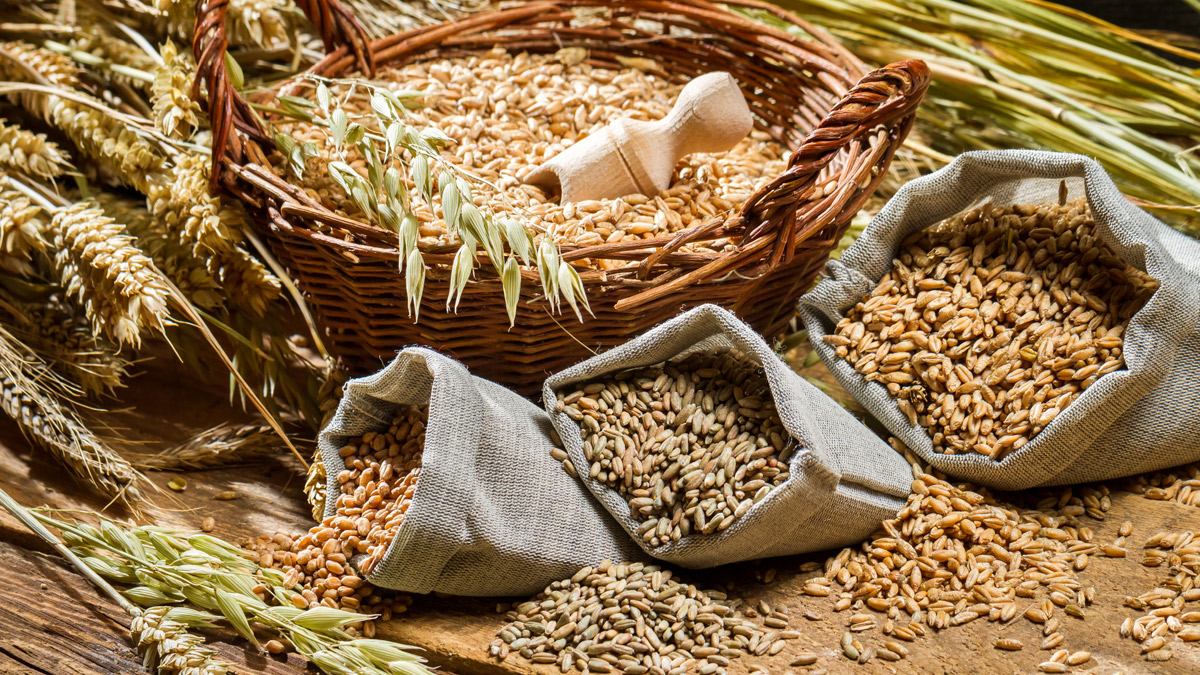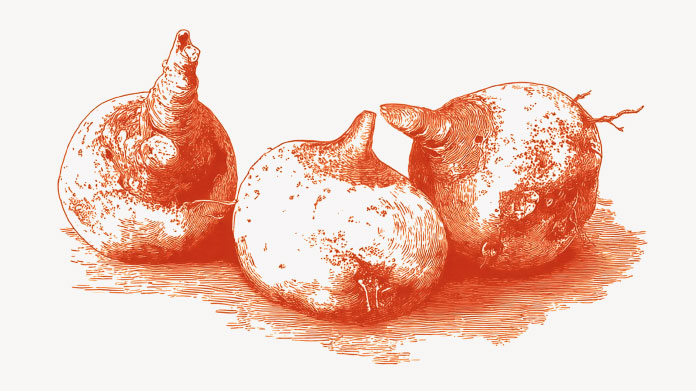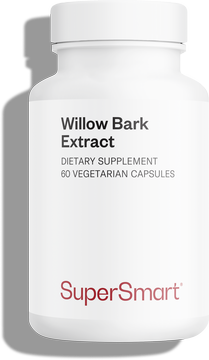
Fibers are indigestible polysaccharides (which form carbohydrates) that are found in plants (fruits, vegetables, grains, and legumes). Fibers are essential to our health because they stimulate intestinal transit, boost the immune system, rebalance intestinal flora, lower cholesterol, help us feel sated, and stabilize blood sugar. We can distinguish between two types of fibers: soluble fibers dissolve in water and form a “gel,” while insoluble fibers do not dissolve, but swell, accelerating intestinal transit. Each type of fiber plays different, but complementary roles. Foods rich in fiber contain both soluble and insoluble fibers, but in varying proportions. Fresh fruits, vegetables, and legumes, for example, are richer in soluble fibers, while whole grains have more insoluble fibers.
It’s therefore best to combine both types of fibers (consuming more soluble fiber) to meet our needs for fiber. That, however, isn’t as easy as it sounds, and we’re not consuming enough fiber (about 15 g per person per day, although recommendations specify 25 to 30 g of fiber per day, 10 to 15 g of that amount as soluble fibers). Here are 10 tips for ensuring you get enough fiber.
Eat fruits and vegetables with their skins
Potatoes, pears, zucchini, and cucumbers: whenever you can, eat fruits and vegetables with their skins, which are rich in fiber. Always wash fruits and vegetables thoroughly, or buy organic produce.
Eat fruits and vegetables whole
Fruits and vegetables are by definition fiber-rich foods. But they provide more fiber if you prepare them whole instead of stewed, pureed, or in a soup.
(Re)discover legumes
Lentils, chickpeas, fava beans, and split peas: legumes, are especially rich in fiber, but we too often ignore them, to our detriment. Try to include legumes in your menu at least once a week.
Eat fruits and vegetables at every meal
Eating fruits and vegetables with every meal is essential for meeting our need for fiber. But it’s equally essential for ensuring that we get enough vitamins and minerals. Don’t forget the recommendations of the National Nutrition and Health Program (PNNS in French): 5 fruits and vegetables per day!
Choose whole wheat bread
Forget about white bread, and be sure to buy whole wheat bread, which is rich in insoluble fibers. You can find whole wheat bread at any bakery or prepare it at home.
Prepare cakes with less-refined flour
Refined flour (T55) has little nutritional value as it contains very little fiber. Replace refined flour entirely or partially with semi-whole or whole flour (T150) when you prepare crêpes, cakes, or pies (you can mix several flours).
Snack on dried fruits
Instead reaching for fatty or sugary snacks or other foods without nutritional value, think of dried fruits (apricots, figs, pears, dates) when you feel a little hungry.
Mix nuts into salads or other foods
Nuts (such as almonds) provide fiber. You can grind nuts and add them to cakes or eat them whole with cheese, fruits, and other healthy foods.
Try whole wheat pastas and whole grain rice
Paradoxically, modern supermarkets now offer more and more traditional whole wheat pastas and whole grain rice, which provide healthy amounts of fiber.
Consider rolled oats, wheat germ, or bran
These three items are all rich in fiber and you can use them in almost anything: in salads, yogurt, smoothies, soups, and vegetable stir fries.
1 Days
The products I use are excel·lent
The products I use are excel·lent
ROSAS Josep Maria
9 Days
Delivery is prompt and I never saw a…
Delivery is prompt and I never saw a quality problem with the manufacturing. It is not possible to assess efficacy on a personal basis, since too many factors come into play. Efficacy can only be assessed statistically with a sufficient number of cases.
Roger De Backer
10 Days
I collaborates with the Supersmart…
I collaborates with the Supersmart more than 10 years. Every thing is going good. Quality of the things is good. Delivery comes in time. Five stars definitely !!!
Oleksiy
11 Days
All good
Simple, frictionless site, easy ordering, good delivery updates and execution.
Chris Robbins
13 Days
I feel better
I feel better
Peter Ammann
13 Days
Prompt delivery
Prompt delivery
JAKUB Radisch
14 Days
My new go-to for top quality supplements!
I am buying more and more of my supplements from this superb, high quality company. Cannot recommend it enough. Plus, excellent customer service with a quick, helpful team and speedy deliveries. Highly recommend Supersmart!
Cecilie H.
18 Days
SUPERSMART WHAT ELSE👍
SUPERSMART WHAT ELSE👍
DIEDERLE Christophe
21 Days
Excellent quality products with…
Excellent quality products with innovative formulas, as someone who has been suffering with acid reflux, these supplements have been lifesavers.
Oriana Moniz
21 Days
high quality supplement!
high quality supplement!
GALANT
21 Days
Good service prompt delivery
Good service prompt delivery
Mrs Marcella Reeves
26 Days
I like your clear explanation
I like your clear explanation. And how to make a choice of products for a specific health problem
Ingrid
33 Days
Great product and it arrives quickly.
Great product and it arrives quickly.
SOMMARIVA Gianni
34 Days
Excellent products and fast service.
Excellent products and fast service. What do we need more?
Margarida
38 Days
The variety of products is amazing
The variety of products is amazing, the offers are good and the sending is very fast. I just miss having a bit more of guidance about combinations, possible interactions, etc.
Maria Angeles Verdu





